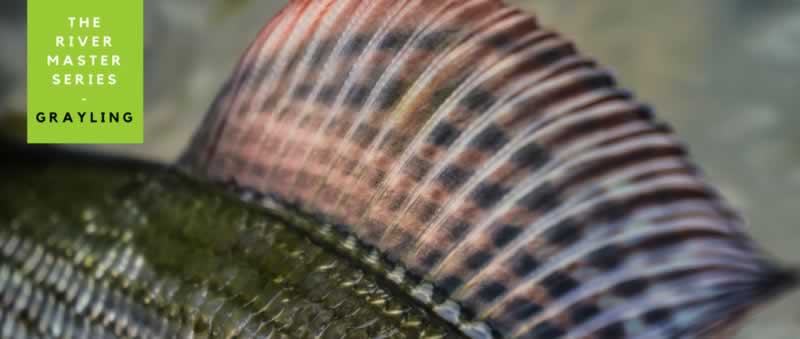
Barbless Flies
Grayling Fishing Tactics
Grayling Curious?
All the information you need to help get the most from your Autumn & Winter Grayling Fishing.
Grayling - All The Info ...
I always eagerly look forwards to the start of the Grayling season and, just like the salmon season is welcomed in with a dram of Whiskey, I always like to welcome in the Grayling season with an offering to the fish - in this case, a nice card to Mr & Mrs Grayling - I know it's sad but it's not let me down yet!

All of the information contained within this page below will give you a great overview and introduction to the Grayling (and how to fish for it), I've also included some of the best imitations to use when targeting Grayling.
If you woud like more 'In Depth' details and unique Grayling patterns, take a look below, otherwise, keep scrolling down to view the full Grayling info:
Unique Grayling Patterns
These are the very best quality flies on the market today, tied with the best materials on the best quality hooks - and are available to you directly (and only) from us. We cannot praise these flies highly enough - they are the best quality commercial flies we've ever seen - and we have over half a million flies pass through our doors every year - yes, they are that good!
Fishing For Grayling - In Depth ...
River Master - Grayling
I've written a series of blog posts, all about the Grayling and it's habitat - I've also included posts on the tackle, techniques and fly patterns used to target them. I've called it the "River Master - Grayling" and they are all available for you to read below.


River Master - Grayling - Part 1
River Master Series The Grayling. Ok, so we are going to start this series of articles on the Grayling by describing what the fish is, what it looks like, where it lives and what type of water it prefers to live in. This first part is a little bit heavy on the factual side, but we thought that to do the subject justice, we really wanted to give the best background we can and hope that this will set the standard for future articles.
River Master - Grayling - Part 1
River Master - Grayling - Part 2
Welcome to the second part in our Grayling series. This week we are taking a look at grayling fishing in Autumn and Winter and pulling out the highlights and a few interesting facts which you may (or may not) already know.
River Master - Grayling - Part 2
River Master - Grayling - Part 3
We hope you are enjoying the series of articles so far, in this article we are going to look at the tackle used to target Grayling (everything except the fly and leader setups – we’re covering those in more depth in future articles).
River Master - Grayling - Part 3
River Master - Grayling - Part 4
We hope you are enjoying the series of articles so far, in this article we are going to look at the basic setup and methods used to target Grayling. Before I start this, i'm no expert (more of an enthusiastic amateur!) and what follows below is just what I have learnt over the years and have found works.
River Master - Grayling - Part 4
River Master - Grayling - Part 5
Autumn is all about searching for the fish as they will be spread around the river and generally living in very small groups – use a searching method. During Autumn, you will either be fishing very small dry flies or nymphs. I will not explain the dry fly method, as there are numerous other posts on the subject, but I will discuss a few of the basic nymphing method for Grayling.
River Master - Grayling - Part 5Specialist Grayling Selections
Each of our Grayling Selections below offer outstanding value for money, giving you all the flies you need to have a great Grayling season. From "Taster Selections" which give you a couple of each of all the different Artisan patterns, to the Ultimate Perdigon Selection which contains all the Grayling patterns you need, presented in a Tacky Double-Sided day Pack Silicone fly box.
